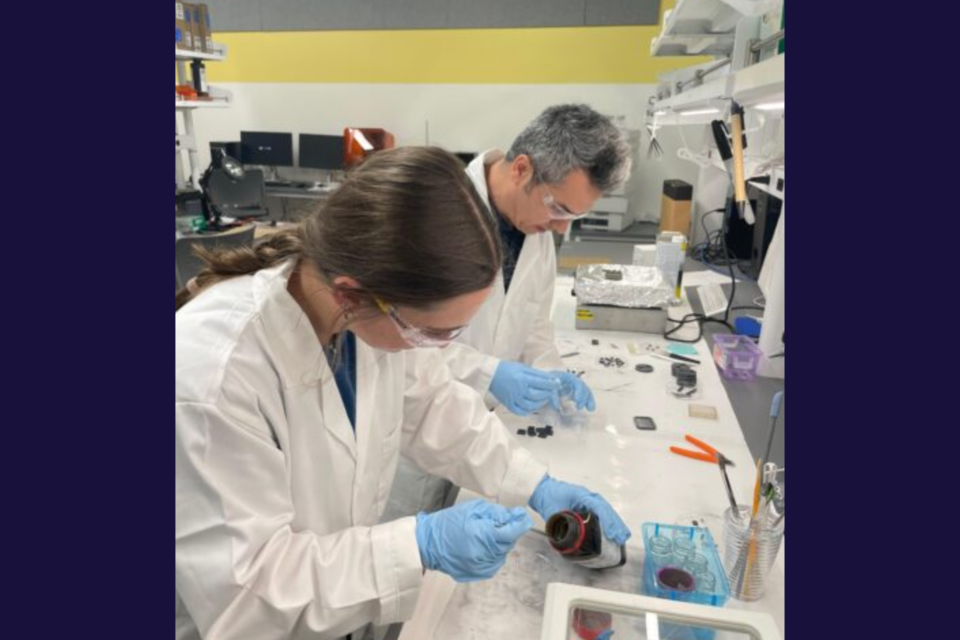To the untrained eye, an insulin pump resembles a small, electronic device, like a pager.
For Type 1 Diabetics (T1D), it’s a literal lifeline keeping them alive by providing a steady, measured delivery of insulin their bodies can’t produce.
But these life-saving devices can be finicky, prone to occlusion or battery failure. They can malfunction, leading to the under or over-delivery of insulin. On top of that, diabetics need to wear the pump 24/7 to avoid hyperglycemia. They’re uncomfortable and unwieldy, making user’s daily life more complicated.
Georgia Southern University researcher and graduate student Madison Procyk is streamlining that process in the hopes of making life a little easier for diabetic patients.
Procyk’s research has been funded by the global research foundation Breakthrough T1D, where Sevki Cesmeci, PhD , associate professor of mechanical engineering, serves as the sole principal investigator.
“Insulin delivery systems are expensive, bulky, and can be unreliable,” explained Procyk, a mechanical engineering major.
Traditional delivery systems typically cost around $6,000 without insurance and rely on complex mechanical components. If one fails, the entire pump becomes unusable and needs to be replaced.
That’s why her research is so important. Her proposed design emphasizes a simpler, more user-friendly system that uses an electromagnet, aiding in the delivery of the insulin by inducing small pressure along the cannula.
“The main goal is to shrink the size of the pump as much as possible while maintaining a viable insulin supply for the patients,” she explained. “The pump will include multiple one-way valves, so when the pumping action is induced, insulin flows from the reservoir to the patient.”
The proposed model is developed with size and simplicity in mind, making it smaller and lighter than other pump systems currently on the market.
“This design is different from others,” said Procyk. “That’s because it leverages an electromagnetic actuation mechanism and will be 3D printed, making it patchable, rechargeable, [refillable] and reusable.”
The research is grant-funded by Breakthrough T1D, formerly known as the Juvenile Diabetes Research Foundation. The foundation works to support the development of an artificial pancreas system, drastically improving the quality of life for patients with Type 1 Diabetes.
“This was an extension of research that we were already working on,” explained Cesmeci. “We’ve already published several papers on innovative micropump designs and received two internal seed grants, one from the College of Engineering and Computing and one from the Office of Research, before receiving the grant. This grant supports our mission of improving the quality of life for people living with diabetes.”
The organization awarded $200,000 to Cesmeci, giving him and his students a chance to play a major role in this research.
“This work aligns with Georgia Southern’s mechanical engineering program’s emphasis on applied research and our commitment to addressing real-world challenges through engineering innovation,” Cesmeci explains.
That commitment inspired Procyk to present her findings at the International American Society of Mechanical Engineers (ASME) IMECE Undergraduate Poster Exposition in Portland, Oregon, in 2024, where she placed first out of 48 entries.
“I am incredibly proud of Madison’s achievement,” said Cesmeci. “She did an incredible job of representing Georgia Southern University on an international stage.”
Procyk is now pursuing her graduate studies as a graduate assistant in the Mechanical Engineering Department under Cesmeci’s supervision. The research process gave her more than an opportunity to learn—it led her future in a direction she hadn’t initially considered by applying her research skill to developing practical applications for medical equipment.
“I am just really looking forward to broadening my skills as an engineer,” she said. “ And I am grateful to be able to continue both my education and my research as I enter the master’s program.”




